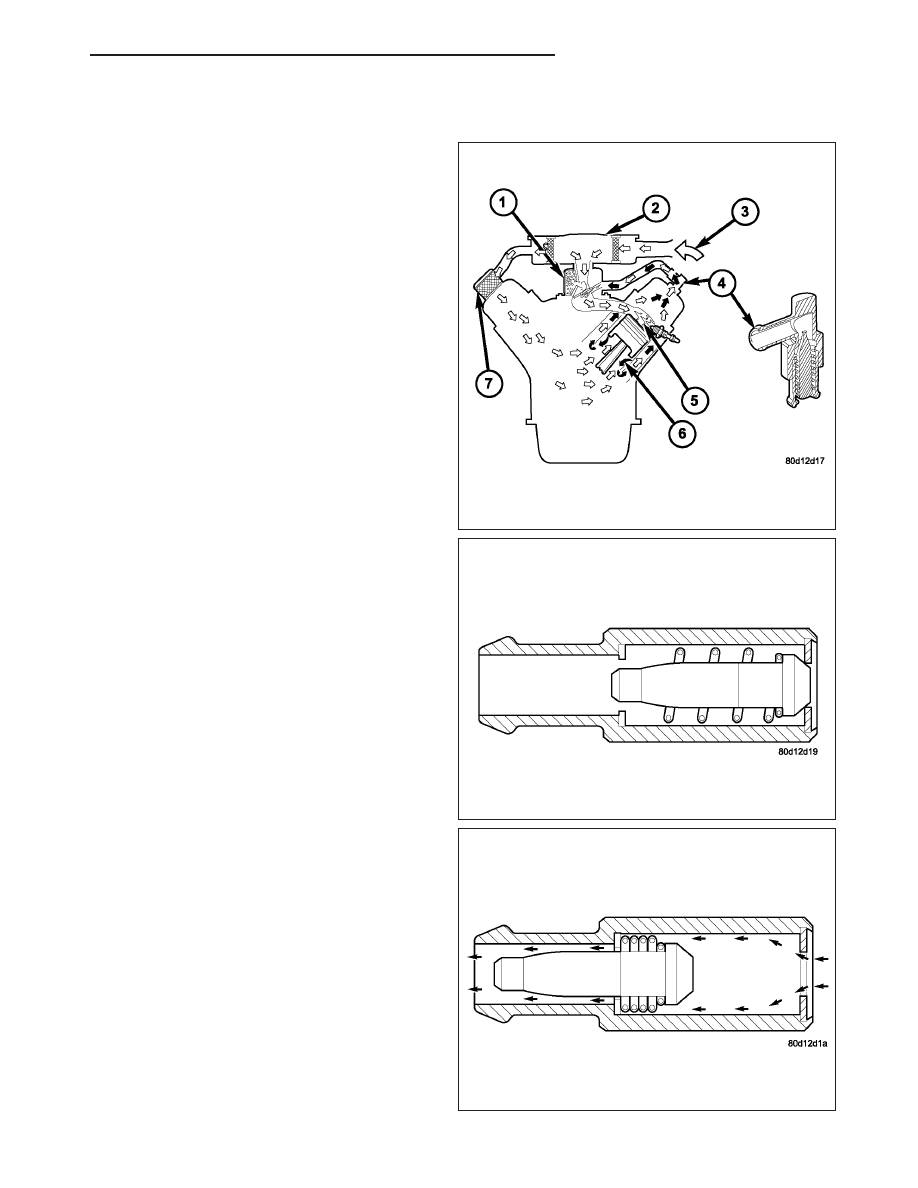Content .. 1577 1578 1579 1580 ..
Dodge Durango (HB). Manual - part 1579

OPERATION
A typical enclosed crankcase ventilation system is
shown in the graphic.
The PCV system operates by engine intake manifold
vacuum. Filtered air is routed into the crankcase
through the air cleaner hose. The metered air, along
with crankcase vapors, are drawn through the PCV
valve (4) and into a passage in the intake manifold.
The PCV system manages crankcase pressure and
meters blow by gases to the intake system, reducing
engine sludge formation.
The PCV valve contains a spring loaded plunger. This
plunger meters the amount of crankcase vapors
routed into the combustion chamber based on intake
manifold vacuum.
When the engine is not operating or during an engine
pop-back, the spring forces the plunger back against
the seat. This will prevent vapors from flowing through
the valve.
During periods of high manifold vacuum, such as idle
or cruising speeds, vacuum is sufficient to completely
compress spring. It will then pull the plunger to the top
of the valve. In this position there is minimal vapor
flow through the valve.
HB
EVAPORATIVE EMISSIONS
25 - 19